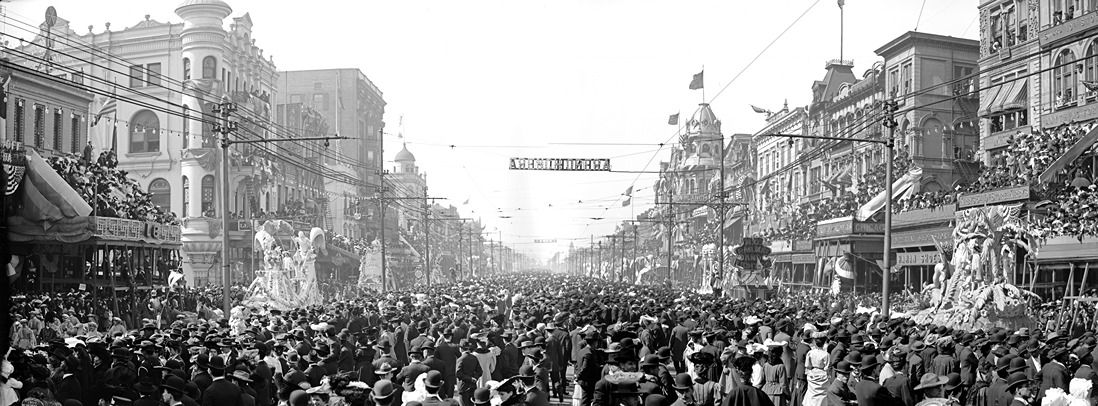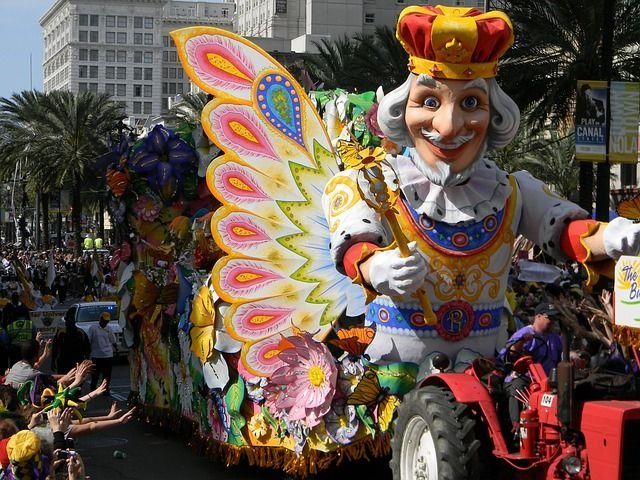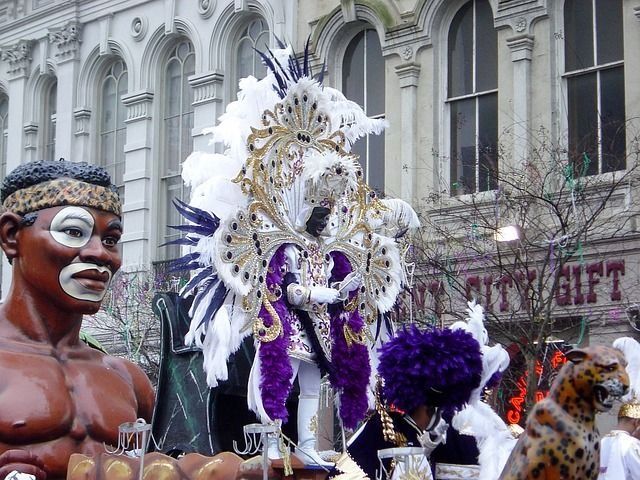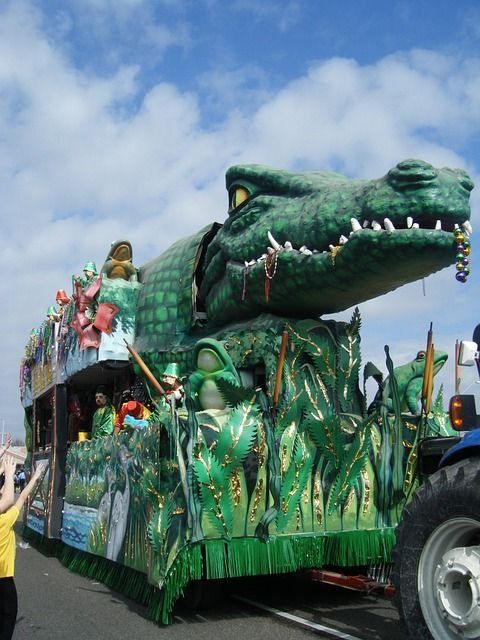The History of NOLA's Most Famous Celebration
The first use of the words "Mardi Gras" in Louisiana was in 1699, when Pierre le Moyne, Sieur d'Iberville, named a bend in the river "Pointe du Mardi Gras," in honor of that year's Fat Tuesday. However, Carnival was rarely celebrated in the new colony—the early people of the Big Easy found life in the mud-caked huts and thatched roofs of New Orleans's pioneer days brutal and unrelenting.

But by the time the French governor, the Marquis de Vaudreuil, made masked balls popular in New Orleans in the 1750s, Mardi Gras was already being celebrated. Impromptu processions of street maskers were fairly common by the 1830s, and it was they who tossed the first Mardi Gras throws, which were originally sugarcoated peanuts. Zulu would invent the first signature throw, their famous coconut, but it would be Rex who would pioneer the now ubiquitous Mardi Gras beads, which were first thrown in 1921. The term throw itself, though, comes from the idea that those who were tossing these trinkets had so much in excess that they could simply give it all away by "throwing it to the crowd."
The First Mardi Gras Krewes
But organized Mardi Gras—that is, Mardi Gras parades with floats and a theme—would arrive shortly thereafter. In 1837, Mardi Gras street parades were dubbed "Cowbellians" after the Cowbellian deRakin Society, a Mardi Gras organization from Alabama. That same society would stage their first themed float parade three years later in Mobile, known as Heathen Gods and Goddesses. And this is crucial: said society inspired members of the Pickwick Club to form their own Mardi Gras organization in the Crescent City. Founded in 1857, the Mistick Krewe of Comus was named after the Greek God of merriment and their inaugural theme would be Demon Actors from John Milton's Paradise Lost.

Next would come The Twelfth Night Revelers (1870), Rex (1872), The Knights of Momus (1872), and Proteus (1882), all organizations made up of wealthy white men from the uppermost echelons of society. And they would transform Mardi Gras from a participatory extravaganza into an event where citizens gathered not to partake in, but to watch the procession. But in doing so, they brought a kind of educated spectacle to the celebration that had been missing from New Orleans, in addition to establishing the traditions of modern Carnival.
Rex assigned meaning to the colors of Mardi Gras using their 1892 parade, Symbolism of Colors: purple for justice, gold for power, and green for faith. And Comus's pseudo Old English term krewe became the standard term for most Mardi Gras organizations. Proteus invented the call-out section at the Mardi Gras ball, and the Twelfth Night Revelers not only introduced the first Carnival queen, but, in borrowing the French, then Creole, custom of eating gateau des rois (king cake) on Twelfth Night to select their queen, cemented the connection between king cake and Mardi Gras. They were also the first to use political satire and the first non-parading krewe; since 1876, they have focused entirely on their private ball.
Carnival & Social Change

Though no official rule barred other groups of people from creating their own krewes, these first organizations forbade women, African Americans, Jews, and Italians from joining, as well as white men who did not have the proper pedigree. But over time, this practice would lose its coercive social power. The Zulu Social Aid and Pleasure Club (1909) was the first African American parading krewe. And the Mardi Gras Indians found some of their inspiration from Native Americans traveling with Buffalo Bill's Wild West Show. They arrived in New Orleans in 1884, and the Creole Wild West tribe was founded in 1885. The first female club to stage a parade was the Krewe of Venus in 1941, and the Virgilians, in 1939, became the first Italian-American krewe.
But this changing social landscape would culminate in the founding of the superkrewe Bacchus, and then Endymion, in the 1960s. Their formation marked one of the biggest changes in Mardi Gras history: krewes designed for the general public. With celebrity kings and an open policy towards ball invitations, Bacchus led the way as the pinnacle of inclusivity. The elitism of the old Mardi Gras social order was largely a thing of the past, at least as a general, citywide practice. And in subsequent years, following this change in custom, three more superkrewes would join them: the krewes of Orpheus (1994), Muses (2001), and Nyx (2012).

Though the Big Easy now had krewes for every stratum of society, inclusivity had its limitations. This was especially true for the old-line krewes—what the oldest of the Mardi Gras organizations would come to be called—since their attitudes towards krewe membership, culture, and social practices had remained unchanged despite the evolution of public opinion. But even newer krewes mostly preferred the insularity of the old practices, regardless of ethnicity or social status. Even so, the city of New Orleans, despite a bitterly divided city council, passed an ordinance in 1991 requiring all parading krewes to desegregate. Though most krewes opposed the decision, only Comus, Momus, and Proteus stopped parading.
The traditions that the old-line krewes pioneered in the late 19th century have both evolved and remained the same, but race, sex, ethnicity, and social standing can no longer prevent someone from joining, or from creating, their own krewe. Yet, their approach has been replaced with a less refined form of entertainment and ritual. Nevertheless, the meeting of the courts of Comus and Rex still officially ends the Mardi Gras season every year. And in the year 2000, Proteus resumed parading. Modern Mardi Gras's inclusivity has restored a degree of the old participation common during its earlier years, though its form and spectacle is radically different.
New Orleans' Most Colorful & History Holiday
Regardless, however, of how Mardi Gras is understood and celebrated, it remains, as it ever has, even after 300 years, the city's most iconic and most enduring institution.

